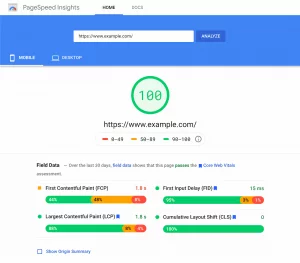In the ever-evolving world of web development, success hinges on a delicate balance between creativity and functionality. This equilibrium is often achieved through Cascading Style Sheets (CSS), the cornerstone of visual styling on the web. To simplify and accelerate the design process, developers often turn to CSS frameworks—comprehensive toolkits equipped with predefined styles, responsive components, and layout systems. Whether using the simplicity of Bootstrap or the utility-first approach of Tailwind CSS, these frameworks provide a solid starting point for crafting polished, user-friendly interfaces.
Yet, with this convenience comes a unique set of challenges. CSS conflicts—situations where multiple style rules compete to control a single element—can lead to visual inconsistencies, broken layouts, or unexpected behavior. Navigating these issues is essential for building reliable, scalable, and aesthetically consistent websites.
A CSS framework is akin to a versatile toolkit, providing predefined styles, components, and layout systems that streamline the design process. From Bootstrap to Tailwind CSS, these frameworks offer a robust foundation for building visually appealing and user-friendly interfaces.
However, CSS conflicts can arise when different stylesheets attempt to control the same element, leading to unexpected and often undesirable results. Join us as we navigate the realm of CSS conflicts and frameworks, exploring best practices, practical examples, and the symbiotic relationship between resolving issues and harnessing the power of modern CSS frameworks.
10 CSS Conflicts That Can Cause Major Problems In Your Web Design
1. Specificity Adjustment
Specificity in CSS determines which styles take precedence when conflicts arise. It is based on the type of selector used. For instance, an ID selector has higher specificity than a class selector. When CSS conflicts occur, adjusting the specificity by using more specific selectors or combining them appropriately resolves the issue.
Problem:
.container {
background-color: blue;
}
#main-content .container {
background-color: red; /* Not applied due to lower specificity */
}
Solution:
Increase specificity for the second rule:
#main-content .container {
background-color: red; /* Now applied due to higher specificity */
}
2. Order of Stylesheet Inclusion
The order in which stylesheets are linked in the HTML document influences the application of styles. Styles from a stylesheet loaded later can override those from an earlier one. By organizing the order of stylesheet inclusion, you control which styles have priority, helping to manage and resolve conflicts.
Problem:
<link rel=”stylesheet” href=”styles.css”>
<link rel=”stylesheet” href=”overrides.css”> <!– Loaded first –>
Solution:
Reverse the order of stylesheet inclusion:
<link rel=”stylesheet” href=”overrides.css”> <!– Loaded later, takes precedence –>
<link rel=”stylesheet” href=”styles.css”>
3. !important Rule
The !important rule is a declaration that gives a style the highest specificity, making it override other styles even if they are more specific. However, using !important excessively can make the CSS hard to maintain. It is recommended to use it sparingly and as a last resort to address specific CSS conflicts.
Problem:
.important-text {
color: green !important; /* Too forceful, causing issues */
}
Solution:
Use !important judiciously or find alternative solutions:
.important-text {
color: green; /* Preferred without !important */
}
4. Inheritance Management
CSS properties are inherited from parent elements to their children. When CSS conflicts arise due to inherited styles, specifying styles directly for child elements resolves the issue. This ensures that the child elements don’t inadvertently inherit conflicting styles from their parent, providing more control over the styling hierarchy.
Problem:
<div class=”parent”>
<p class=”child”>Text here</p>
</div>
.parent {
color: blue;
}
.child {
color: inherit; /* Inherits color from parent, but causing a conflict */
}
Solution:
Specify the color directly for the child:
.child {
color: red; /* Resolves conflict by setting a specific color */
}
5. Combining Selectors
Combining selectors allows for the creation of more targeted and specific rules. This is particularly useful in complex layouts where CSS conflicts may arise between different sections of a webpage. By combining selectors, you increase the specificity of your rules, making it easier to pinpoint and style specific elements without affecting others.
Problem:
header.navbar {
background-color: yellow;
}
Solution:
Combine selectors for increased specificity:
header.navbar {
background-color: yellow; /* Higher specificity */
}
6. Box Model Adjustments
The box model determines how the dimensions of an element are calculated, including width, height, padding, and borders. CSS conflicts can occur when these properties are not adjusted correctly, leading to unexpected layout issues. Ensuring proper adjustments, such as using box-sizing: border-box to include padding in the width calculation, resolves CSS conflicts and maintains a predictable layout.
Problem:
.box {
width: 50%;
padding: 10px;
}
Solution:
Adjust box model properties to prevent overflow:
.box {
box-sizing: border-box; /* Ensures padding is included in the width calculation */
width: 50%;
padding: 10px;
}
7. Clearing Floats
Floating elements can affect the layout flow by causing subsequent elements to overlap. Clearing floats using the clear property prevents this overlap. Common techniques include using a clearfix or applying the clear property to an element after the floated ones, ensuring proper rendering and layout.
Problem:
.floating-div {
float: left;
}
.content {
/* Content overlaps with the floated element */
}
Solution:
Clear floats to prevent overlapping:
.floating-div {
float: left;
}
.content {
clear: both; /* Ensures content doesn’t overlap with floated element */
}
8. Responsive Design with Media Queries
Responsive design is crucial for adapting styles to different screen sizes and devices. Without proper consideration, conflicts may arise when styles designed for larger screens are applied to smaller devices. Utilizing media queries allows you to create conditional styles, ensuring a seamless and conflict-free experience across a variety of devices.
Problem:
.responsive-image {
width: 100%;
}
Solution:
Use media queries for responsive design:
.responsive-image {
max-width: 100%;
}
@media (min-width: 768px) {
.responsive-image {
width: auto; /* Adjust as needed for larger screens */
}
}
9. Font Size and Unit Consistency
Inconsistencies in specifying units for font sizes can lead to variations in text rendering. It’s essential to maintain unit consistency, such as using px or em consistently throughout your stylesheets. This not only avoids conflicts but also ensures a cohesive and visually appealing typography across your website.
Problem:
.text {
font-size: 16; /* Missing unit, causing unexpected behavior */
}
Solution:
Include the unit for font size:
.text {
font-size: 16px; /* Ensures proper interpretation of font size */
}
10. Vendor Prefixes for Cross-Browser Compatibility
Different browsers may require vendor prefixes for certain CSS properties to ensure compatibility. Conflicts arise when these prefixes are omitted or not correctly applied. Including appropriate vendor prefixes, such as -webkit- or -moz-, addresses these conflicts, allowing your styles to be interpreted consistently across various browsers and preventing rendering discrepancies.
Problem:
.box {
border-radius: 10px;
}
Solution:
Include vendor prefixes for broad browser support:
.box {
border-radius: 10px;
-webkit-border-radius: 10px;
-moz-border-radius: 10px;
}
Best Practices to Tame CSS Conflicts: From Inherited Styles to Modular CSS
1. What Causes Conflicting CSS Rules on the Same Element?
CSS conflicts occur when multiple rules attempt to style the same property on a particular element, and the browser must choose which rule to apply. This decision is based on rule specificity, style sheet source order, inheritance, and whether inline styles are used.
Key Conflict Triggers:
- Inline styles vs. external CSS file declarations
- Multiple css rules targeting the same or child elements
- Overlapping or conflicting rule definitions
- Inherited styles from a parent element
- Plugins injecting inline styles or external styles
- Use of
!importantin multiple CSS declarations
2. Understanding CSS Specificity and Rule Hierarchy
Specificity governs which style rule takes precedence. For example, an inline style will override a class selector, and a rule with !important trumps most other rules (but at a cost).
Best Practices:
- Use class selectors for flexibility and reuse
- Avoid excessive use of
!important - Follow a consistent rule hierarchy with clear naming conventions
3. Avoid Over-Reliance on Inline Styles
Inline styles (e.g., <div style="color:red">) have the highest specificity and override styles from any css file or style sheet. While sometimes necessary, they reduce maintainability and often clash with broader rules.
- Solution:
- Refactor inline styles into your external style sheet
- Keep styling logic separate from your HTML
4. Adopt a CSS Architecture: BEM, SMACSS, OOCSS
Structured CSS methodologies help prevent style conflicts and clarify the purpose of each rule.
Popular CSS Systems:
- BEM: Uses patterns like
.block__element--modifier - SMACSS: Organizes styles into categories like base, layout, and modules
- OOCSS: Encourages reusable, object-based classes
These methods reduce the chances of multiple css rules targeting the same particular element unintentionally.
5. Modularize CSS for Conflict Isolation
Large global stylesheets increase the risk of conflicting css rules and inherited issues. Modular styles promote separation and maintainability.
Techniques:
- Create component-based stylesheets
- Use CSS Modules in frameworks like React
- Scope styles in Vue or Angular components
- Leverage CSS-in-JS libraries (e.g., Styled Components)
6. Normalize Default Styles to Avoid Conflicts
Every browser has its own default styling, which may clash with your CSS.
Recommended Tools:
normalize.cssreset.css- Tailwind CSS Preflight
Normalization helps mitigate unexpected conflicting styles between child elements and inherited values.
7. Diagnose CSS Conflicts with Browser DevTools
Browser DevTools allow you to trace how conflicting styles are applied to any same element.
Key Features:
- Inspect style source and hierarchy
- View overridden and inherited styles
- Identify active vs. inactive css rules
- Live test style changes in the browser
8. Use Linters and Validators to Preempt Errors
Prevent CSS conflicts before they hit production by adding automated checks.
Tools to Use:
- Stylelint for enforcing consistency
- Prettier for style formatting
- CSSLint for legacy support
These tools help maintain a conflict-free style sheet.
9. Test Responsiveness and Visual Consistency
Testing across devices ensures that inherited styles, media queries, and layout rules don’t clash.
Testing Tips:
- Use BrowserStack for cross-browser/device testing
- Implement visual regression testing with Percy or Chromatic
- Add CSS checks to CI/CD pipelines
Build Conflict-Free CSS with Confidence — and Speed It Up with Nestify
Resolving CSS conflicts isn’t just a developer chore — it’s a critical step toward creating websites that are reliable, scalable, and visually consistent across devices. Mastery over specificity, inheritance, and cascading rules empowers you to build clean, modular stylesheets that are easier to debug, maintain, and extend as your project grows.
But writing great CSS is only half the battle. Hosting your site on a robust, performance-first platform ensures your well-optimized code performs flawlessly under real-world traffic.
💡 Take the next step: Supercharge your frontend with blazing-fast page loads, server-side caching, and automatic optimization when you host your site on Nestify. Whether you’re building a portfolio, SaaS product, or content-rich blog, Nestify ensures your site performs just as beautifully as it looks.
👉 Try Nestify FREE today — no credit card required, no hassle. Experience the difference of developer-optimized hosting now.
FAQs on CSS Conflict Resolution
How do CSS conflicts impact web development, and why are they important to resolve?
CSS conflicts occur when different styles clash, leading to unpredictable and undesirable layouts. Resolving conflicts is crucial for maintaining a consistent and visually appealing design, ensuring that styles are applied as intended.
How do CSS frameworks contribute to conflict resolution?
CSS frameworks provide predefined styles and components that follow best practices, reducing the likelihood of conflicts. They offer a structured approach to design, fostering consistency and simplifying the development process.
How can developers stay updated on emerging CSS frameworks?
To stay informed about the latest CSS frameworks, developers can follow reputable web development blogs, attend conferences, participate in online forums, and explore documentation from framework creators. Keeping an eye on industry trends is key.
Are there any potential drawbacks to using CSS frameworks?
While CSS frameworks offer numerous advantages, potential drawbacks include increased file size, a learning curve for beginners, and the risk of over-reliance on default styles. It’s essential to shortlist a framework that aligns with the project’s needs.



